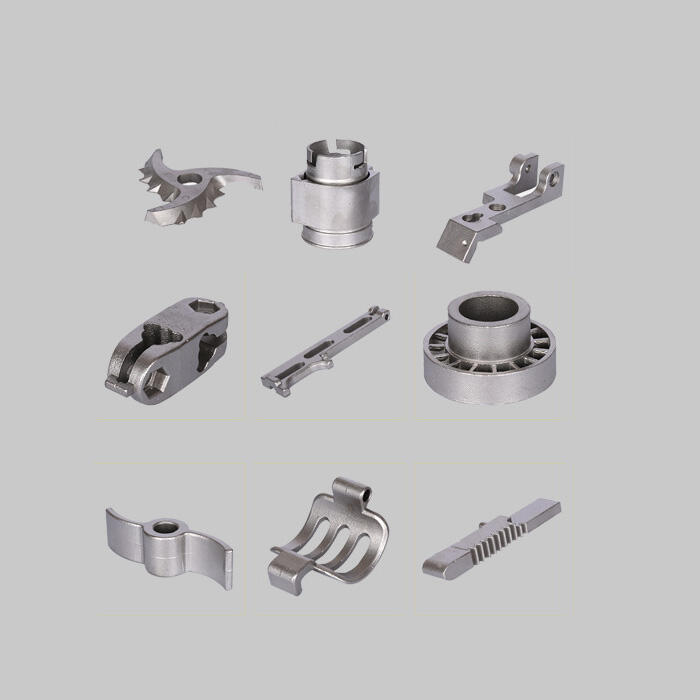مقدمة
في تصنيع الأجزاء الدقيقة لمختلف الصناعات، تعتبر المعالجة بالقولبة المخصصة الصب و CNC والتشغيل الآلي أسلوبين مهمين في تشكيل المعادن. لكل تقنية أولوياتها وقيودها الخاصة، وأحد الاعتبارات الرئيسية عند اختيار تقنية هو السعر. ستركز هذه المقالة على تكاليف المعالجة المخصصة الصب بالضغط بشكل خاص وتقارنها بتكاليف التشغيل الآلي، مما يساعد الشركات المصنعة على اختيار أفضل حل لوضعها.
عوامل التكلفة في صب القوالب المخصص
صب القوالب المخصص هو تقنية تشكيل تُجبر فيها المعادن المنصهرة داخل تجويف قالب قابل لإعادة الاستخدام تحت ضغط كبير.
عوامل تكلفة صب القوالب كالتالي:
أ. تكاليف المواد: عادةً ما تكون تكلفة صب القوالب أعلى من تكاليف الصب الرملية للألمنيوم، حيث أن الألمنيوم نفسه غالي الثمن، وكذلك الزنك والمغنيسيوم، ولا نتحدث حتى عن那些 السبائك النحاسية التي تضيف تكاليف مواد كبيرة إلى الإنتاج.
B. تكاليف الأدوات والقوالب القوالب المستخدمة في صب المعادن عادة ما تكون مخصصة و يمكن أن تكون مكلفة، لكنها قابلة لإعادة الاستخدام للإنتاج الضخم.
C. تكاليف الإنتاج بما في ذلك العمالة، الطاقة لصهر واحتواء المعدن، وصيانة آلات صب المعادن.
D. العمليات بعد الصب قد يتطلب صب المعادن عمليات إضافية مثل التجهيز، التشطيب أو المعالجة الحرارية؛ مما يضيف بشكل كبير إلى التكاليف الإجمالية.
عوامل التكلفة في الحفر باستخدام CNC
آلة الحفر CNC (التحكم العددي بالحاسوب) تعني أن الأجزاء يتم إنشاؤها بإزالة المادة من القطعة المراد معالجتها وتشكيلها إلى الشكل المطلوب.
عوامل التكلفة التي يجب مراعاتها عندما تكون متورطًا في الحفر باستخدام CNC تشمل:
- تكلفة المعدات: تتراوح آلات CNC في الحجم من نماذج صغيرة وميسورة التكلفة يمكن استخدامها من قبل الأفراد وحتى الآلات الكبيرة المناسبة للأغراض الصناعية والتي تكلف آلاف الدولارات.
- تكاليف المواد: قد تتضمن عملية التصنيع باستخدام CNC استخدام مجموعة واسعة من المواد، كل منها له تكاليف وخصائص تصنيع خاصة به.
- تكاليف العمل: يجب على الميكانيكيين المهرة والمشغلين برمجة وإعداد ومتابعة عمل آلات CNC.
- تكاليف الطاقة والتشغيل: تستهلك آلات CNC الكثير من الطاقة أثناء تشغيلها. بالإضافة إلى ذلك، تشمل تكاليف التشغيل أشياء مثل دفع الإيجار، وأقساط التأمين،以及其他 النفقات التشغيلية.
- التكلفة الناتجة عن شراء أدوات القطع: يتطلب تصنيع CNC استخدام العديد من أدوات القطع المختلفة لتحقيق الطرق المختلفة اللازمة للإنتاج. مدة حياة هذه الأدوات محدودة ويجب استبدالها بشكل متكرر.
عوامل تكلفة تصنيع CNC
تستخدم CNC (التحكم العددي بواسطة الحاسوب) آلات موجهة بالحاسوب لإزالة المادة من peace العمل وإنشاء قطعة. عوامل التكلفة في تصنيع CNC هي كما يلي:
أ. تكاليف المعدات: يمكن أن تتراوح آلات CNC من وحدات صغيرة وميسورة التكلفة للمهوسين وحتى آلات صناعية كبيرة تتميز بالسرعة العالية والدقة العالية.
ب .تكاليف المواد: ستعتمد عملية التصنيع باستخدام CNC على مجموعة متنوعة من المواد، كل منها له تكلفته وخصائصه الخاصة في التصنيع
ج. تكاليف العمالة: يتطلب الأمر عمالاً وميكانيكيين مهرة لبرمجة، إعداد، ومراقبة هذه الأجهزة $E. ب. تكاليف الطاقة والمصاريف العامة: تستهلك أجهزة CNC طاقة أثناء التشغيل، بالإضافة إلى المصاريف العامة مثل الإيجار، التأمين، والتكاليف الإدارية.
د. تكاليف الأدوات وإرهاقها: تتطلب عملية التصنيع باستخدام CNC مجموعة متنوعة من أدوات القطع، وكلها لها عمر افتراضي محدود ويجب استبدالها بشكل دوري.
استراتيجيات تحسين التكلفة
للتقليل من التكاليف في كل من صب القوالب وتصنيع CNC يجب تنفيذ استراتيجيات.
أ. لأجل الصلاحية للتصنيع: يمكن أن تخفض التكاليف وزيادة جودة المنتجات تصميم الأجزاء مع الأخذ في الاعتبار عمليات التصنيع.
ب. تحسين العملية: سيعني التحسين المستمر للعملية وقت عمل أقل، وأوقات دورة أقصر أو كفاءة أفضل للآلة. يمكن أن تنخفض التكاليف. ج. تحليل تكلفة دورة الحياة: يمكن أن يؤدي النظر في إجمالي تكلفة الملكية على مدى عمر الجزء إلى تمييز بين الإنتاج عن طريق الصب بالقالب أو استخدام آلة التحكم الرقمي بالحاسوب التي تكون أكثر عقلانية لظروفك.
الخاتمة
للمقارنة بين تكاليف صب القوالب المخصصة والتصنيع باستخدام الحاسوب CNC، هناك العديد من الجوانب المعنية بدءًا من تكاليف المواد مرورًا بالأدوات، العمل، كفاءة الإنتاج والتغليف. بينما يبرز صب القوالب في الإنتاج ذي الحجم الكبير مع التصميمات المعقدة، فإن تصنيع CNC يقدم مرونة ودقة في القدرة على التصنيع. وهو مثالي للإنتاج بكميات قليلة والأجزاء المصنوعة حسب طلب العميل. يجب على الصانعين أخذ المتطلبات المختلفة لمنتجاتهم، وإنتاج الكمية، ومعايير الجودة التي يجب تحقيقها عند تحديد الطريقة الأكثر اقتصادية للإنتاج. مع تقدم التكنولوجيا، ستصبح كل من تقنية صب القوالب وأجهزة CNC بلا شك أكثر كفاءة، مما سيغير بشكل أكبر الاقتصاديات المتعلقة بتشكيل المعادن.

